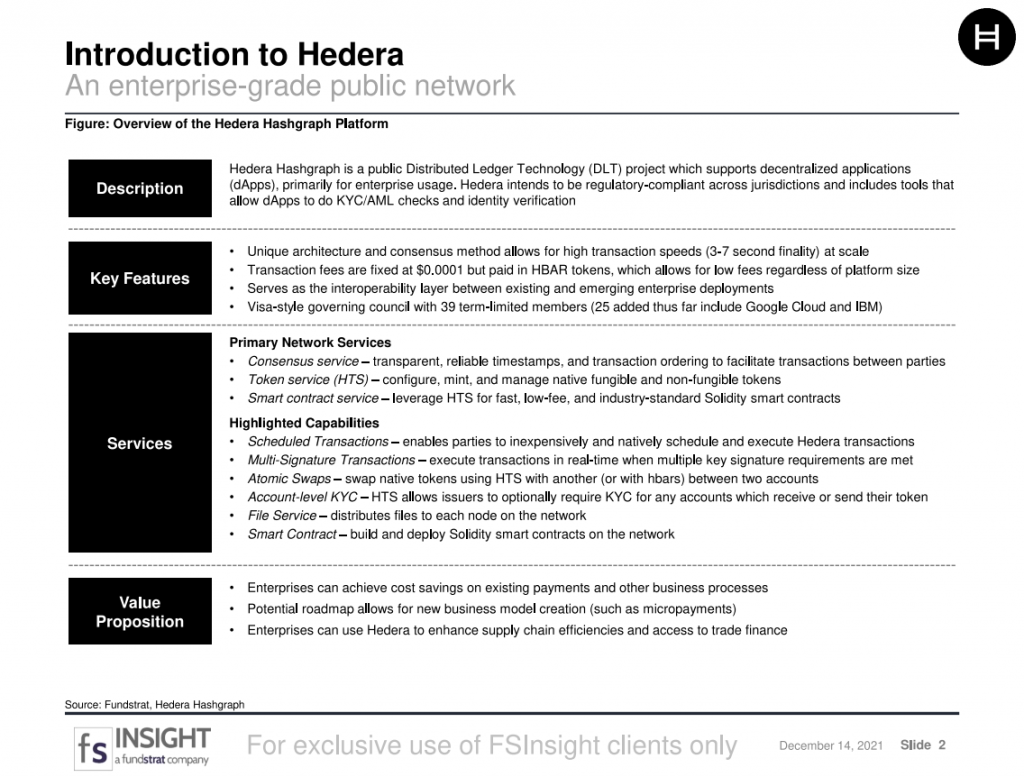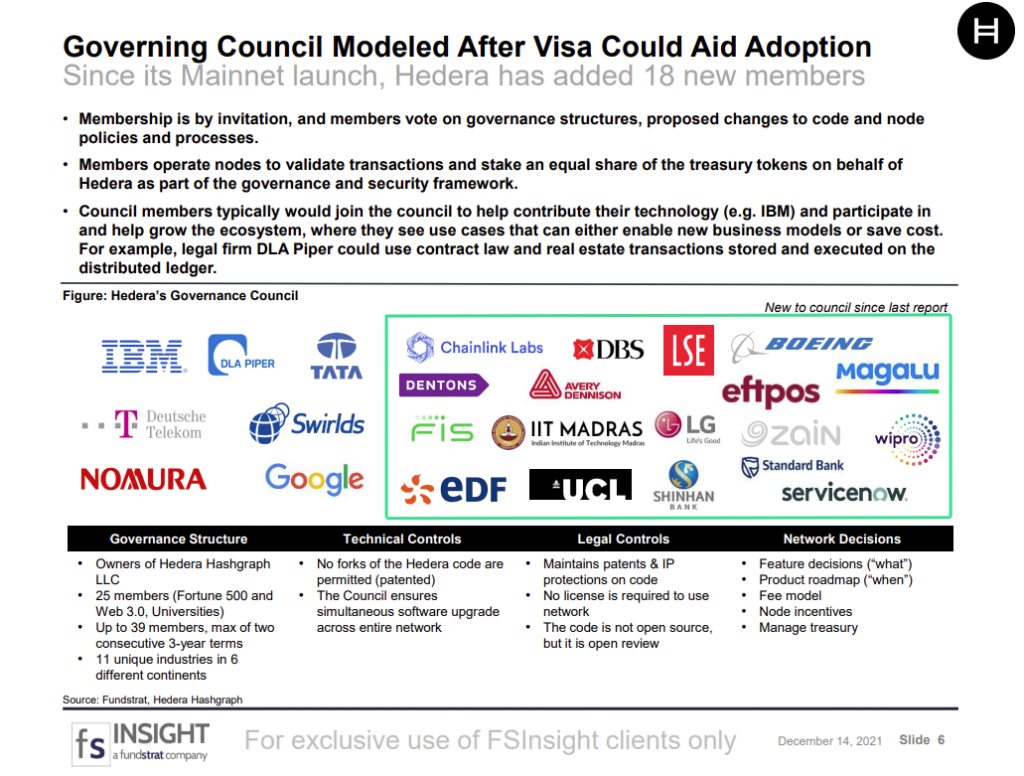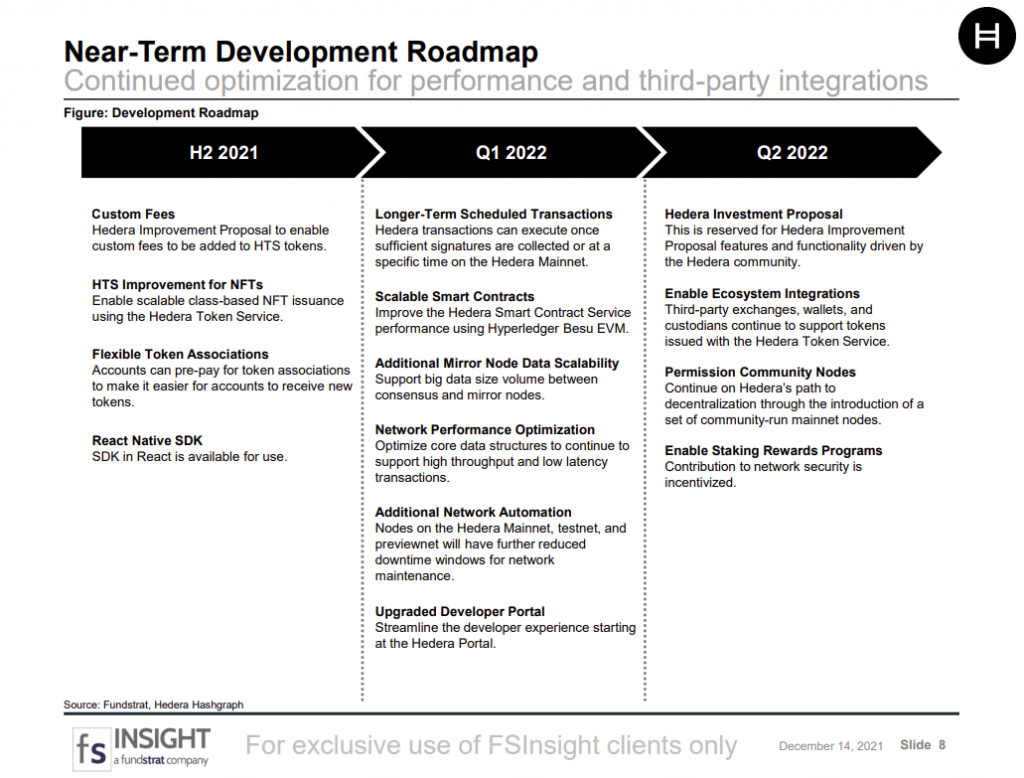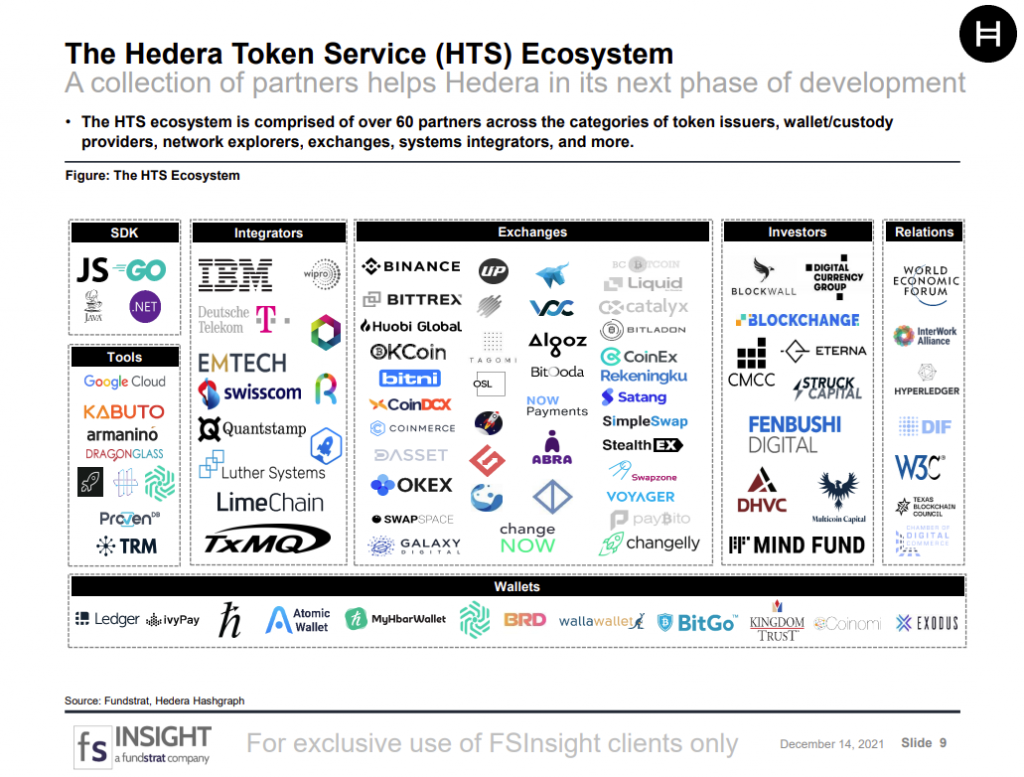Hedera: Emerging dApp Ecosystem Powered By Next-Gen Consensus
Click HERE for the full copy of this report in PDF format.
Hedera (HBAR) is a public Distributed Ledger Technology (DLT) network designed for the creation of secure decentralized applications (dApps) with near real-time consensus. Due to its enterprise focus, the network was constructed with an emphasis on regulatory compliance across jurisdictions and includes tools that allow dApps to run KYC/AML checks and identity verification.
- Scalable transaction fee design. Hedera leverages its native cryptocurrency, HBAR, to fuel and secure the network while incentivizing nodes to contribute computational resources. Transaction fees are fixed depending on the type of transaction but average $0.0001 and are paid in HBAR tokens (Slide 2). The total transaction fee comprises a node fee that compensates the specific node that processes the transaction, a network fee that pays all participating nodes for consensus, and a service fee corresponding to the type of service. This fixed fee model makes the platform appealing as a scalable enterprise solution relative to other Layer-1 blockchains (Slide 5).
- Built on Hashgraph technology. The main distinction between Hedera and most other smart contract platforms is that it licenses Swirlds’ patented Hashgraph technology. Hashgraph is more energy-efficient than its blockchain counterparts as there are no ‘stale’ blocks that miners waste energy on – each node adds a hash last created by itself and a second hash received from another node. This translates to a potential transaction bandwidth of 10,000 TPS and a 3-7 second finality competitive with other major Layer-1 blockchains (Slide 11).
- Notable Governing Council additions. Hedera has adopted a governing council framework that was modeled after Visa. Since its open access launch, Hedera has added 18 new members by invitation who vote on governance structures, proposed code updates, node policies, and processes. Some notable additions include Chainlink Labs, London School of Economics, and Boeing. As all members of the Hedera Governing Council have been invited to join as network operators, Hedera Council members are not only governing the network but also actively participating in it (Slide 6).
- Material progress towards decentralization. Hedera is currently a public network, allowing developers and users to create accounts, transact, and deploy decentralized applications. However, its Mainnet consensus nodes are permissioned and operated by Hedera Council members. As the security, stability, and incentives of Hedera matures, the network will transition from a public permissioned to a public permissionless model by first opening node operations to more permissioned ecosystem partners, then to any person or organization with sufficient compute capabilities. (Slide 8)
- Early use cases show promise. Hedera’s enterprise focus has garnered adoption from Everyware, a solutions provider for real-time asset tracking and monitoring across different sectors. One of Everyware’s most critical applications is tracking storage and transportation of temperature-sensitive COVID-19 vaccines for the United Kingdom’s National Health Service. Other developers include Calaxy, a social media app created by NBA player Spencer Dinwiddie allowing creators to monetize content via their fan base, and GOMint, a digital content tokenization platform, which enables content creators to tokenize their digital content and monetize via partnerships with content platforms (Slide 13).
- What are the risks? Dollar-denominated fees may lack necessary incentives for early adopters, investors, and developers to migrate to the platform. Public permissioned model may fail to successfully transition to public permissionless model. Seats on the Hedera Governing Council may remain unfilled and iterative approach to token distribution may impact decentralization (Slide 19).
Bottom line: Hedera is still a permissioned network and has several vacant governing council seats. But it leverages a patented DLT technology to offer secure and near real-time consensus that potentially exceeds the performance of other existing DLT networks today. While there are challenges to overcome as a nascent network, early enterprise use cases offer a glimpse into the potential adoption once fully scaled and decentralized.
Key Slides from this report…
Introduction to Hedera (Slide 2)

Introduction to Hedera (Cont.) (Slide 3)

Governing Council Modeled After Visa Could Aid Adoption (Slide 6)

Near-Term Development Roadmap (Slide 8)

The Hedera Token Service (HTS) Ecosystem (Slide 9)


